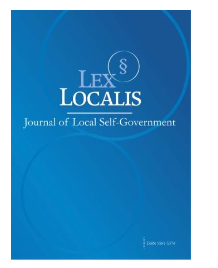STRENGTHENING DISASTER RISK GOVERNANCE: BUILDING RESILIENT AND ADAPTIVE COASTAL BARANGAYS IN ZAMBOANGA CITY
DOI:
https://doi.org/10.52152/t7bnc145Keywords:
disaster risk governance, socio-economic adaptability, governance structure, community resilience, coastal barangaysAbstract
This study examines the complex interplay between environmental exposure, social vulnerability, and institutional governance in shaping community resilience to natural hazards. Anchored on socio- ecological systems theory and guided by the United Nations Sustainable Development Goals (SDGs) 9 (Industry, Innovation, and Infrastructure), 16 (Peace, Justice, and Strong Institutions), and 17 (Partnerships for the Goals), the research adopts a mixed-methods design integrating quantitative surveys, qualitative interviews, and focus group discussions across selected coastal barangays. The study investigates the extent to which geographic exposure, socio-economic disparities, and governance structures influence the adaptive capacity and disaster preparedness of these communities. Findings reveal that the vulnerability of Zamboanga City’s coastal barangays is heightened by a convergence of factors: poverty, informal settlements, inadequate infrastructure, and limited access to basic services such as education, healthcare, and sanitation. Physical exposure to coastal hazards—typhoons, storm surges, and sea-level rise—compounds these challenges, further undermining the safety and livelihood security of residents. Despite these vulnerabilities, evidence of resilience emerges through strong social cohesion, community participation, indigenous knowledge systems, and adaptive coping strategies embedded in local governance practices. However, the study underscores persistent institutional gaps, including fragmented coordination among agencies, insufficient funding for disaster initiatives, and weak policy enforcement at the barangay level. The research concludes that strengthening disaster risk governance requires a multi-stakeholder, community-based approach emphasizing inclusive participation, resilient infrastructure, and adaptive governance mechanisms. Policy recommendations advocate for enhanced capacity-building programs, evidence-based decision-making, and sustained collaboration among government, civil society, and academic institutions. By contextualizing resilience within the socio-environmental realities of coastal communities, this study contributes to a deeper understanding of local disaster governance and provides a strategic framework for building sustainable, adaptive, and disaster-resilient barangays in Zamboanga City.
Downloads
Published
Issue
Section
License
Copyright (c) 2025 Lex localis - Journal of Local Self-Government

This work is licensed under a Creative Commons Attribution-NonCommercial-NoDerivatives 4.0 International License.








